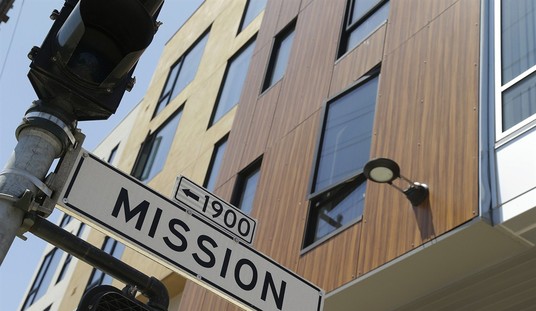The final iteration of Q2 GDP reaffirmed the previous estimate released last month, showing that the US economy expanded at an annualized rate of 2.5% in the second quarter. However, a few adjustments might portend a slowdown rather than an acceleration for the rest of the year:
Real gross domestic product — the output of goods and services produced by labor and property located in the United States — increased at an annual rate of 2.5 percent in the second quarter of 2013 (that is, from the first quarter to the second quarter), according to the “third” estimate released by the Bureau of Economic Analysis. In the first quarter, real GDP increased 1.1 percent.
That’s better than Q1, which finished at a paltry 1.1%, but still not terribly impressive four years into a recovery. In order to generate enough jobs to put the marginalized millions back to work, we need to see sustained growth at the 4% level. We hit that level only once in the past four years, and haven’t come close to sustaining it. Instead, the Great Recession has been followed by the Great Stagnation, and this is just another installment of it.
The good news is that real final sales of domestic product nearly kept pace at 2.1%, which means that most of the growth seen in Q2 didn’t come from inventory expansion. The bad news is that the expansion — such as it is — won’t continue into Q3 at the same pace, according to the Associated Press:
Many analysts believe growth is slowing to a sluggish rate at or below 2 percent in the current quarter. Economists had initially hoped growth would improve in the second half of the year.
If economists are correct that economic activity slowed this summer, it would mark the third quarter in the last four that growth rates have been 2 percent or lower. Growth in the fourth quarter of 2012 nearly stalled out at a barely discernible 0.1 percent rate and then improved slightly to 1.1 percent growth in the January-March quarter. …
Economists had initially thought that growth would accelerate in the second half of the year behind steady hiring and fading impact from government spending cuts and higher taxes.
But early activity for the quarter has been discouraging. Consumers spent more cautiously in July as their income barely increased. The government spending cuts have weighed on defense spending and business investment. And higher mortgage rates now threaten to slow a housing recovery that had been a solid contributor to growth in the first half of the year.
Even the job gains from earlier in the year appear to be slowing. Employers have added an average of just 155,000 jobs a month since April, down from an average of 205,000 for the first four months of the year.
Some economists worry that growth remains too weak to accelerate hiring, boost pay and encourage Americans to spend more. Consumer spending drives roughly 70 percent of economic activity.
The “jobs gains” has never been much above the treading-water level anyway. Adding 155K jobs a month only barely keeps pace with population growth. Even a sustained level of 205K per month would take six years to make up for 4 million workers who have left the work force since the recovery began. We need job growth of 350K-400K to make a serious dent in the chronic unemployment problem, and again, we’re not even getting close to having that kind of expansion.
What could provide that spark? Aggressively producing more of our own energy would help lower business costs and create jobs on their own, as would a reduction in costly regulatory overhead on businesses — especially that imposed by ObamaCare. The White House implicitly admitted that much when it postponed enforcement of the employer mandate after businesses stopped hiring full-time workers this year, but that didn’t stop employers from rationally adjusting to future costs. Incentivizing capital investment through tax reform would also boost the economy. Until we start pursuing those rational policies, though, don’t expect the Great Stagnation to get any better, and prepare for it to eventually get worse.








Join the conversation as a VIP Member